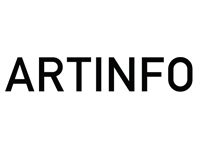
Art Info
EMERGING ARTISTS: PHOTOGRAPHY'S DIGITAL DIVIDE?
by Joao Ribas
Photographs were once—and sometimes still are—perceived as objective depictions of the visible world, recording reality, rather than interpreting it in the manner of a painting or drawing. This “truth-telling” reputation has served as a tool for social activists keen to expose social ills (think of Jacob Riis’s images of the poor of New York City), photojournalists documenting news events and tabloids looking to catch people in flagrante delicto.
For artists, however, photography’s presumed ability to render the world as it is has been a problem since its beginning: the mechanical process was considered to undermine aesthetic considerations. “If photography is allowed to supplement art in some of its functions, it will soon have supplanted or corrupted it altogether,” wrote Charles Baudelaire at the dawn of modern art.
But artists, rather than having been restricted by the precision and literalness of the medium, have been able, creatively and imaginatively, to manipulate the process—and turn it into an art form. Examples from the 19th century include the hand-tinting of negatives, combining the printing of several photographs into a single image and staging ‘tableaux vivants’ which imitated painting. They also used optical tricks to capture emanations from the spirit world on film.
These 19th-century manipulations have obvious echoes today: It can be argued that the ‘digital darkroom’—using computers to extensively alter or even create a photographic image—is merely the latest image-tinkering method. It seems ‘purity’ in photography has always been a chimera.
Rather than being the exception, in fact, digital manipulation of images is the rule today. Few fine-art photographers still preserve the process of film negative to print with no computer manipulation. Leading contemporary practitioners such as Andreas Gursky, Gregory Crewdson and Thomas Demand all use digital alterations—from subtle to explicit—to enhance their photographs. They may use polarizing filters or radically alter color, and a large number of these photographs are not only manipulated, but also digitally printed.
And many emerging photographers are now forgoing film altogether and turning to purely digital means in their practice—with no qualms about challenging the conventions of what a photograph can be. Artists such as Loretta Lux and Anthony Goicolea, for example, compose their photographs directly on a computer.
Such a widespread use of these digital tools begs the question: Is there a divide in contemporary photography between a digital vanguard and ‘purist’ artists, dealers and collectors?
Walead Beshty, heralded by several curators and critics as one of the best emerging photographers around, rejects the notion that photography could, or should, be split into such camps. “I use digital, as does almost anyone who makes prints larger than 16” x 20,” says the L.A.-based photographer and critic. “I don’t believe that’s not photographic—it seems arbitrary to draw a line between computer-aided and darkroom-dependant printing,” he adds.
Many photography dealers admit to an initial unease with the use of digital technology, but most have now fully embraced it. And the fact that today’s photography market is booming seems to confirm that buyers are equally comfortable with digitally altered and printed images.
“Digital manipulation used to bother me," says Sarah Hasted, a partner of Hasted Hunt, a Chelsea gallery specializing in contemporary photography. “Because I come from a very traditional background in photography, I thought that was the end of it as I knew it. The truth is it was just the beginning of something fantastic. I’ve been in this field for 20 years now. I’ve seen the end of one generation and the beginning of this whole new aspect,” she adds.
Hasted, whose current exhibition features the work of Erwin Olaf, who combines ‘traditional’ photography with digital composition, continues: “Digital photography first got the same reaction color photography did—initially people were skeptical about whether it could go anywhere. I personally don’t really care how an artist gets there, I just look at the photographs and decide if I like where they are. Good photographs are good photographs. If I look at a photograph and think it’s accomplished, that it’s for me.”
Hasted also thinks employing digital tools now has little impact on the photography market; it seems the digital divide only pertains to purist collectors of vintage black-and-white photography, not to those of contemporary work.
“If you’re collecting contemporary photography you cannot avoid it, because most people are now using some form of digital manipulation; it’s more prevalent than we know—because a lot of people don’t admit to it. Most collectors of contemporary photography don’t care if it’s a Polaroid or a digital. I think, like me, they just care if it’s something they simply need to have,” Hasted says.
Bruce Silverstein, a photography dealer who shows both leading contemporary photographers and handles the estates of Andre Kertesz and Robert Doisneau, sees digital technology as helping to advance the art form. “The use of digital photography has opened up the field beyond the external visual world,” Silverstein says. “It has given the photographers greater flexibility in truly creating the content of a photograph. As far as I’m concerned, that’s always good.
“Photography is an art form, and to suggest it cannot evolve, like any other art form, is very limiting,” Silverstein adds. “The idea that somehow value should be determined by the materials of a photograph is something that in my view will slowly dissipate.”
Aesthetics still dominate the debate. “The digital camera has made it easier for people to become photographers,” Hasted explains. “The problem is, just because you have a camera doesn’t mean you’re a photographer.”
In the end, it might be wise to remember: “There are no rules for good photographs, there are only good photographs,” as Ansel Adams said—who, by the way, touched up clouds on his negatives.